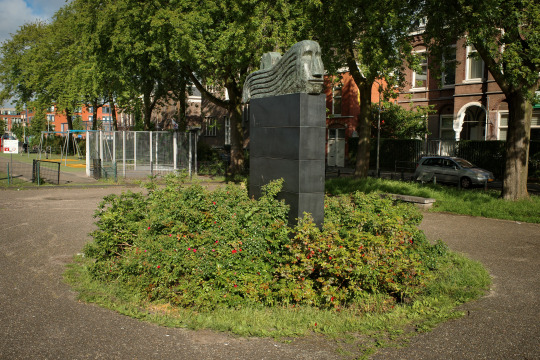#sigurður guðmundsson
Explore tagged Tumblr posts
Text

Event, Sigurður Guðmundsson, 1975
#photography#art#sigurdur gudmundsson#1970s#performance art#icelandic artists#event#masks#sigurður guðmundsson
100 notes
·
View notes
Text

Ph Sigurður Guðmundsson
4 notes
·
View notes
Text

Sigurður Guðmundsson Collage, 1979
#performance#contemporary art#contemporary#photography#body art#performance art#arte#nature#marina abramovic#fluxus
30 notes
·
View notes
Text

SIGURÐUR GUÐMUNDSSON
34 notes
·
View notes
Text
These two dresses are the type that's called upphlutur, easily recognizable by the embroidered, vest-like top over a shirt. Icelandic traditional dresses come from different eras instead of areas, which makes sense since Iceland is tiny.
In order of age: Faldbúningur Upphlutur Peysuföt Skautbúningur Kyrtill Of these, three first ones were actual dress types people wore, and therefore they overlap a little on style - they all evolved from the same origin. Skautbúningur and kyrtill were designed by Sigurður Guðmundsson in the 1800s.


Iceland's Traditional Woman's Dress
23K notes
·
View notes
Text

Concentration, photograph, Sigurdur Gudmundsson, 1971
1 note
·
View note
Text

Statement, Sigurður Guðmundsson, 1976-1977
0 notes
Video
vimeo
Sigurdur Gudmundsson: There Is No Visual Language from Louisiana Channel on Vimeo.
"Every new work requires a new language." Meet Icelandic artist Sigurður Guðmundsson, whose life in art expanse over more than 60 years. In the video, he shares his philosophies on art and love.
"My way into art started with completely failing at everything else." Sigurður Guðmundsson never succeeded in school and worked in forests around Iceland from a young age. One day, through his father, he met the principal of the Icelandic College of Arts and Crafts, who helped him get into the school. Since then, Guðmundsson has been working with art. "I'm the type of artist that has no plan," he explains. "I desire something that is on the poetical side."
Sigurður Guðmundsson's most famous body of work is a series of photographs which he calls 'Situations'. "I have no connection with photography," he says and continues: "I didn't feel it as photography. I felt it more like sculptural or poetry." Thus, he sees the works more like poems than traditional photography.
As an Icelandic artist, poetry and literature is inevitable, according to Sigurður Guðmundsson. "Language is very dominant by us, the Icelandic artists. Our main culture, when it comes to art, was poetry in this country. Everybody was a poet." According to Guðmundsson, the visual arts are still a very new thing in Iceland, so he experiences that he and his peers went into the visual arts with a "literary attitude", as he calls it. "I always denied it when critics were talking about the visual language. And I said: No, there is no visual language," he continues, "Every new work requires a new language."
Sigurður Guðmundsson (b. 1942) is an Icelandic artist who lives and works between Xiamen, Amsterdam and Reykjavik. He studied at the Icelandic College of Arts and Crafts and Academie '63, Haarlem, in the Netherlands. Inspired by the Fluxus movement and painters of the natural world, including Caspar David Friedrich, Guðmundsson conveys longing and a search for a better world in his works, which range from photography and painting to sculpture and text. In his "Situations" series, the artist placed himself in illogical situations to comical yet melancholic results. Sigurður Guðmundsson has had many solo exhibitions, including shows at Galleri Andersson/Sandström, Stockholm, Sweden; Levant Art Gallery, Shanghai, China; Galerie Martine et Thibault de la Châtre, France. He has also participated in multiple group exhibitions, including shows at i8 Gallery, Reykjavik; Moderne Museet, Stockholm, Sweden; The Living Art Museum, Reykjavik, Iceland; Weserburg Museum für modern Kunst, Bremen, Germany; and The Museum of Contemporary Art, Los Angeles, USA.
Sigurður Guðmundsson was interviewed by Roxanne Bagheshirin Lærkesen at his home in Reykjavik, Iceland, in May 2023.
Camera: Simon Wehye Archive footage: 'Portrait of An Artist', 1982, by Dutch television NPS Edited and produced by Roxanne Bagheshirin Lærkesen
Copyright: Louisiana Channel, Louisiana Museum of Modern Art, 2023 Louisiana Channel is supported by Den A.P. Møllerske Støttefond, Ny Carlsbergfondet, C.L. Davids Fond og Samling, and Fritz Hansen.
0 notes
Photo

Sjaan - Sigurður Guðmundsson
#ricoh#ricohgr#gr#grsnaps#ricohgriii#shootgr#gr3#gr3x#thehague#thisisthehague#thehaguedaily#thehaguecity#nederland#denhaag#netherlands#ʼsgravenhage#holland#europa#europe#070#shootgrthehague#shootgrdenhaag#explorethecity#art#kunst#beelden#stroom#contemporaryart#hedendaagsekunst#haagsebeelden
0 notes
Text
Skautbúningur

An icelandic ensemble that was designed by Sigurður Guðmundsson in the mid-19th century. It was made of black cloth with the bodice cut off at the waist with long, narrow sleeves; The long skirt was pleated all around with the pleats being tighter at the back than the front. The neckline and sleeves were decorated with velvet ribbons with motifs of gold or silver garlands of flowers. The bottom of the skirt was embroidered with the same kind of garlands. On the head was worn a faldur with a veil over the headpiece and a golden koffur worn around the veil and faldur.
1 note
·
View note
Text

View, Sigurður Guðmundsson, 1970
#photography#art#sigurdur gudmundsson#1970s#black and white#icelandic artists#performance art#conceptual art#iceland#geography#sigurður guðmundsson
73 notes
·
View notes
Photo

Seascape, 2011 - by Sigurður Guðmundsson (1942), Icelandic
181 notes
·
View notes
Text

Sigurður Guðmundsson Event, 1975
#pina bausch#contemporary art#contemporary#photography#body art#performance art#arte#nature#marina abramovic#fluxus
7 notes
·
View notes
Video
vimeo
Youth by Ásgeir from the album Bury The Moon - Director: Einar Egils
#music#icelandic music#ásgeir#ásgeir trausti#ásgeir trausti einarsson#petter winnberg#nils törnqvist#þorsteinn einarsson#thorsteinn einarsson#einar georg einarsson#sigurður guðmundsson#sigurður halldór guðmundsson#óskar guðjónsson#samúel jón samúelsson#video#music video#einar egils
9 notes
·
View notes
Photo

Sigurður Guðmundsson Composition (study) 1978
🇮🇸 #iceland
#art#conceptual art#art photography#photography#conceptual photography#nordic photography#scandinavian photography#icelandic photography#iceland#Sigurður Guðmundsson
1 note
·
View note
